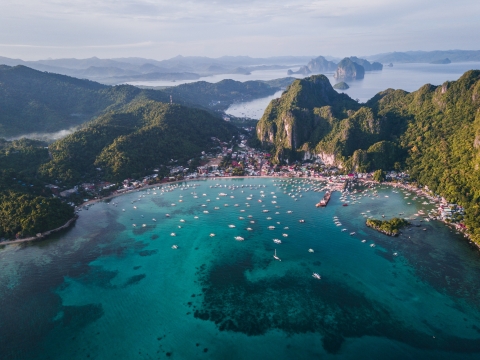

Plastic pollution remains a global crisis, but for the Philippines, one of the suggested top contributors of plastic waste to our oceans, it’s an urgent concern that demands immediate action.
Plastic pollution remains a global crisis, but for the Philippines, one of the suggested top contributors of plastic waste to our oceans, it’s an urgent concern that demands immediate action.
A new study, coordinated by the University of Portsmouth in the UK and Nanyang Technological University in Singapore, has examined the impact of plastic pollution in SE Asian waters.
Using one of the most comprehensive plastic surveys in the Philippines, over 40,000 plastic pieces were collected across 56 sites from the densely populated Manilla Bay to the remote island of Pag-asa. Despite the varying demographic and economic landscapes, the plastic problem was evident at every site.
The prevalence and diversity of plastics in the coastal ecosystems are deeply concerning. It’s clear that the challenges posed by plastic pollution are not limited to a single region, but affect the entire nation.
The main findings of the paper are striking:
- All sites are contaminated: Every one of the 56 sites surveyed was found to be contaminated with plastics, emphasising the all-pervasive nature of this issue.
- Regional variations: The study uncovered significant variations in the amount and types of dominant plastic across different geographic regions. Notably, single use plastics, including food packaging and sachets, were the most abundant in Manila Bay, while fishing-related materials dominated in Palawan. These findings suggest that local industries are significant contributors to plastic pollution in the Philippines.
- Mangroves at risk: Mangrove habitats, known for their vital role in supporting coastal ecosystems, were found to have the highest plastic accumulation due to their root systems, which act as debris filters and traps. This indicates that these unique environments are particularly vulnerable to plastic pollution.
- High exposure to organisms: Exposure assessments revealed that the single use plastics had the highest exposure that may possibly lead to risks e.g., thin plastics, wraps/labels/packaging, straws, plastic bags, fishing lines, ropes and plastic films were found in the greatest number of sites. Their prevalence and dispersal increased the likelihood of negative interactions with marine life and ecosystems.
- Plastic pollution is transboundary: Surveys in Pag-asa Island in the West Philippine Sea in the middle of the South China Sea showed high abundance of foreign products, around 90% of the accumulating plastic bottles were from other coastal countries such as Vietnam, Malaysia, and China. This strongly demonstrates the role of oceanic transport and the transboundary nature of the problem, also demanding a region wide intervention.
The findings are expected to play a pivotal role in shaping policies and interventions to address the plastic pollution crisis in the Philippines.
Professor Simon Cragg, from the University of Portsmouth, said: “The prevalence and diversity of plastics in the coastal ecosystems are deeply concerning. It’s clear that the challenges posed by plastic pollution are not limited to a single region, but affect the entire nation.”
As part of the study, the University of Philippines has provided the most comprehensive assessment to date of plastic pollution in the nation’s coastal habitats, emphasising the urgent need for science driven policies to mitigate this escalating crisis.
This project is an example of scientists and the local governments working together to understand the problem, which was extra challenging given that the surveys were done at the height of the pandemic.
Professor Onda, from the University of the Philippines Marine Science Institute organised the survey. He said: “This project is an example of scientists and the local governments working together to understand the problem, which was extra challenging given that the surveys were done at the height of the pandemic. We managed to harness the support of a large number of volunteers and trained local researchers to help in a huge effort to get the data we needed.”
Until now, studies that ranked the Philippines as a significant contributor of plastic waste in the ocean relied on probabilities and estimates due to a lack of comprehensive data. This information gap has made it challenging to develop science driven and locally relevant policies and interventions to tackle the issue.
Norchel Gomez, from the University of the Philippines, added: “The results of this research are a crucial step towards understanding, managing and mitigating the impact of plastic pollution in the Philippines. This study will be instrumental in crafting science and data driven policies for sustainable management.”
This project is part of a £6m programme to help reduce the impact of plastic pollution on marine ecosystems in South East Asia.
The project is one of four international research collaborations supported by investment from the UK’s Natural Environment Research Council (NERC) and Singapore’s National Research Foundation (NRF), with UK Government funding supported by the Department for Business, Energy and Industrial Strategy (BEIS).
The project is part of the Understanding the Impact of Plastic Pollution on Marine Ecosystems in South East Asia (South East Asia Plastics (SEAP)) Programme.
